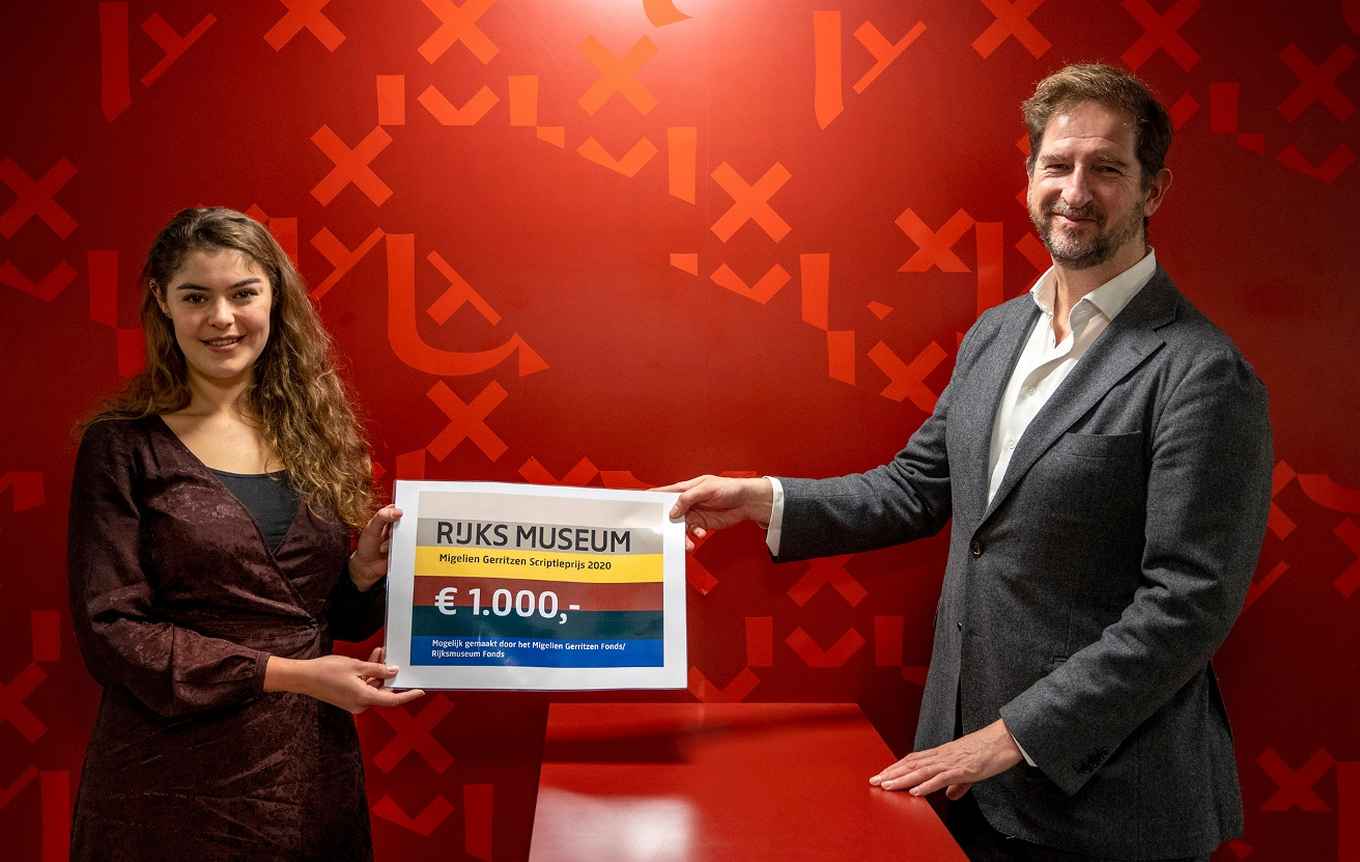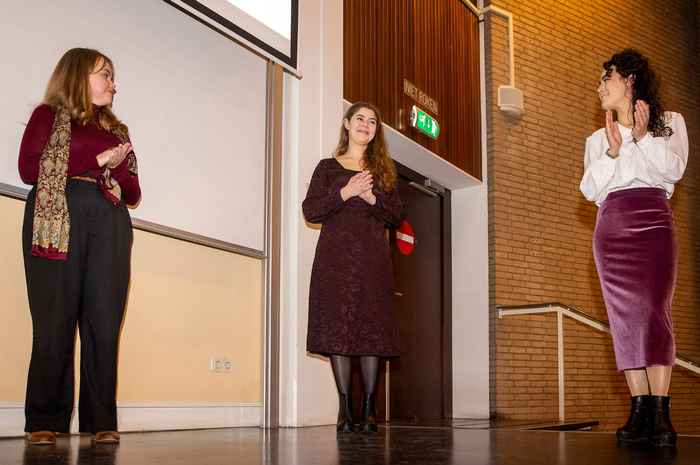Margot Terpstra wins Rijksmuseum-Migelien Gerritzen thesis award 2020
16 December 2020

In her research project, Terpstra investigates why the pages of the sample books in the Museum Lakenhal contain wave-patterned deformations. Using a solid analysis of the materials, a collection survey, and a reconstruction, she determines that with regard to this important collection, the way in which the pages were folded is an important contributor to the pages’ current appearance. This knowledge is crucial when it comes to better preserving and displaying these precious sample books. The thesis furthermore contains advice on how the books can best be conserved and potentially digitised. Although each collection of sample books is unique, the knowledge gathered in this research project and the recommendations that flow from it can also be relevant for other collections.

The jury was unanimous in its choice of Terpstra’s thesis, titled A wave from the past, on the formation of wave-patterned deformation of the Lakenhal Sample books. According to the jury, the intensive research and its clear presentation were the deciding factors.
The other two nominees were Anneke Hoekstra, whose research concerned the biography of a richly decorated notebook, and Edith Sten, who researched a photograph of Gustave Le Gray. This year, the jury of the award consisted of Maarten van Bommel (professor of Conservation Science), Bart Ankersmit (senior researcher Cultural Heritage Agency), and Robert Langh (head of Conservation & Science Rijksmuseum and Chair NICAS)
Rijksmuseum-Migelien Gerritzen thesis award
The Rijksmuseum-Migelien Gerritzen thesis award has been handed out annually since 2013 to the best final project of the UvA Master's in Conservation and Restoration of Cultural Heritage. The winner receives a cheque worth € 1000, half of which is awarded immediately while the other half can be cashed in once the study has been published in an established specialist journal for conservation and restoration.
Conservation and restoration at the UvA
The University of Amsterdam is the only Dutch university that offers a degree programme in restoration that meets the European standard. The programme starts with a two-year Master's in Conservation and Restoration of Cultural Heritage and offers nine specialisations as well as a track in Technical Art History. Upon finishing the Master's, students can complete their training to become a conservator by doing the two-year Advanced Professional Programme.